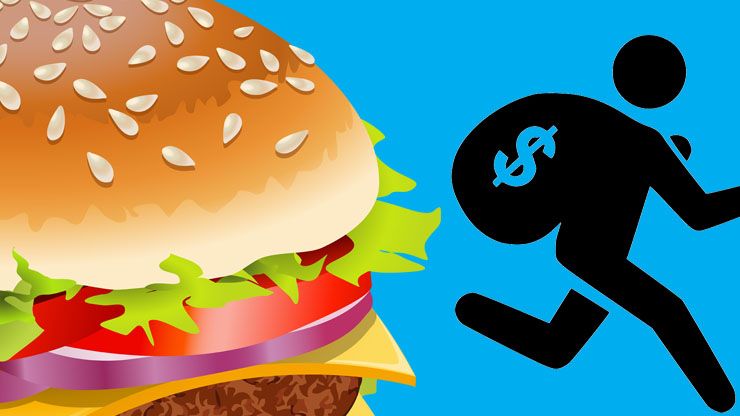It may feel like everywhere you go today, everyone is trying to deceive you. Unfortunately, it's true. You're not safe even in your favorite burger joints.
Fast food restaurants are not a haven, contrary to what most people think. Over time, they have taken advantage of their customers and exploited them in more ways than one. It may be in the form of shady customer service or even misleading advertisements.
Read on to see how your favorite eating joing might be lying to you.
The Fry Trick
It's easy to eat McDonald's fries, but have you ever felt like they disappear too quickly? Your appetite might not be to blame.
Former employees of the food chain have alleged that employees are encouraged to pinch the carton while pouring fries in to make the box appear full when it's half empty. By the time the customer notices, and if they do, they are long gone.
McDonald denied the claims and said that they have strict operational procedures in place that ensure fry portions are not under-filled. It might be a brilliant idea to keep an eye on your packet of fries before you dive in next time.
Same Size, Different Price
Do you get the cup of soup or the bowl? They might be the same size, depending on where you are, but one might cost more than the other.
Online commenters have discussed these sneaky tactics at several restaurants, from local diners to large chains. Products ranging from sodas to soups and milkshakes can have a misleading description.
At one unnamed chain, a comment read that "People would pay more for a bowl but get a cup of soup in a bowl that was shorter and wider at the bottom than the cup." The design of the containers can make it hard to compare the size at a glance.
Track Your Order
Ordering pizza for delivery has never been an easy task. However, the technology that connects you with your favorite dish can be manipulated.
For instance, the Dominos tracker; the webpage allows you to see the exact status of your order on its way from the kitchen to your door supposedly. But employees are the ones who enter that information and can make your order appear to be on a different stage than it is.
Pizzas can be marked as dispatched to drivers who aren't even back at the store. It makes the store's prep time more impressive, but at the cost of misleading customers.
Not What You Asked For
Fast food slogans like 'Have it your way,' have led people to believe that the customer has the power. However, that's not always the case.
Workers from chains like Burger King have confirmed that, at times, what you buy is not always what you get, especially if there is a chance that you can't quickly tell the difference.
Grill Marks Mean Nothing
You see grill marks on your food, and you can taste the distinct grill flavor. Unfortunately, the grill you see in most kitchens is just a flat top.
Most fast-food restaurants receive products from companies whose job is to add those grill marks as well as flavor enhancers to make it taste as if it came straight off the BBQ grill. According to the Food Republic, the deceptive burger patties and chicken pieces are soaked in a flavoring solution made up of animal fats, smoke or carbon flavoring, salt, and other preservatives before being cooked with blasts of hot air. After that, 'not grilled food' is branded to make it appear grilled.
Receipts Don't Add Up
It's advisable that you be keen when checking your meal receipts. In 2017, a Panera Bread customer told the Chicago WGN9 that he noticed an inflated total after one visit. In a statement made after that, a Panera representative said that they found a rare glitch in the system, which resulted in the charge, and they have implemented a change on their receipt structure.
Other customers have come up with a similar issue. So, this glitch might not be quite rare.
What You See and What You Get
Fast food advertisements know how to catch the eye. However, disappointment arises when what you get in real life looks nothing like what is promised in the pictures.
Consumer reports checked out seven fast-food restaurants to see how the pictures on their menus compared to what they ordered. For the most part, the results were disappointing, with Subway coming in as the most misleading.
Does this count as false advertising? According to a spoke's person for the Trade Federal Commission, the truth in advertising laws only apply when restaurants show menu items in print and television advertisements.


